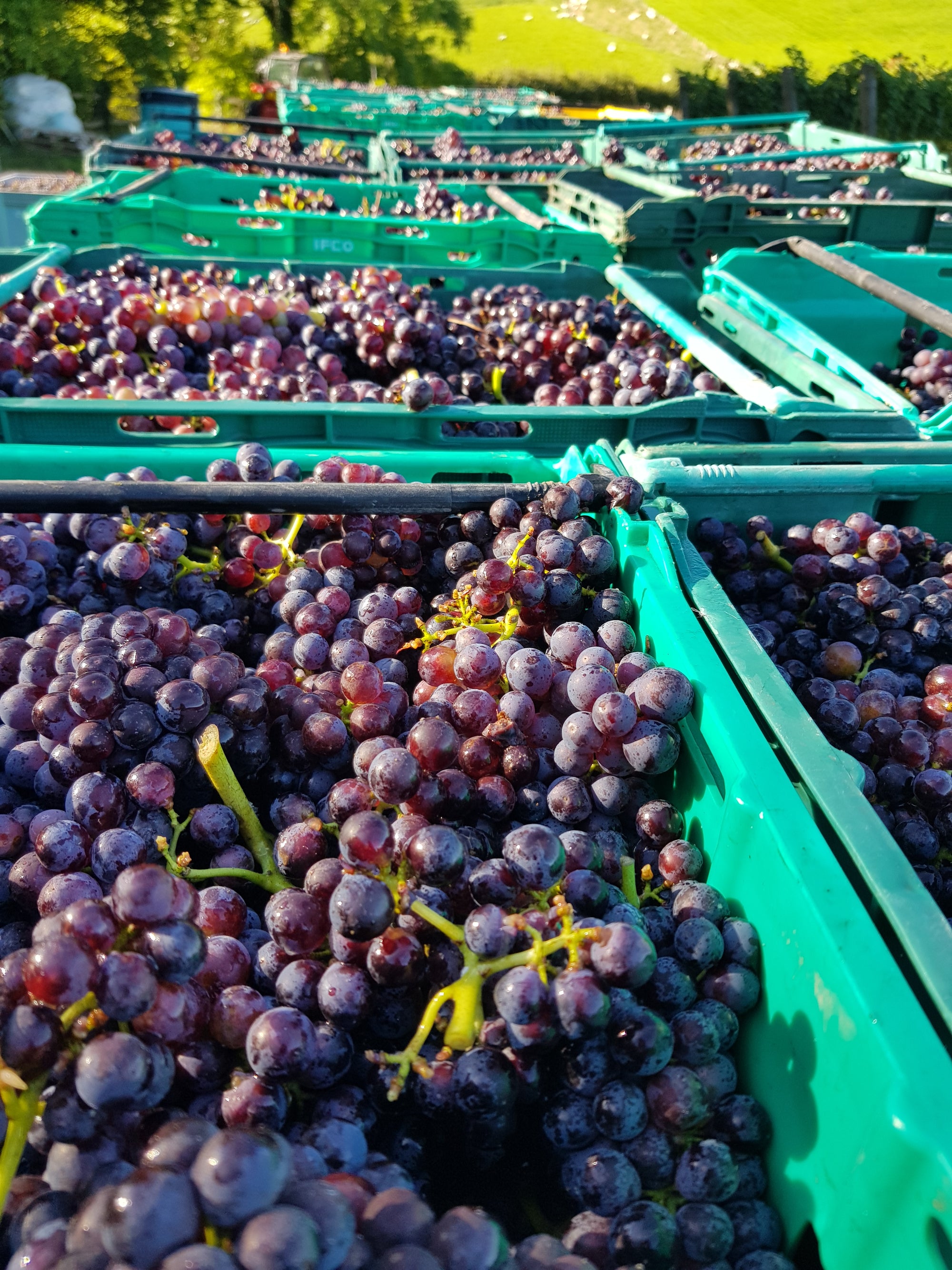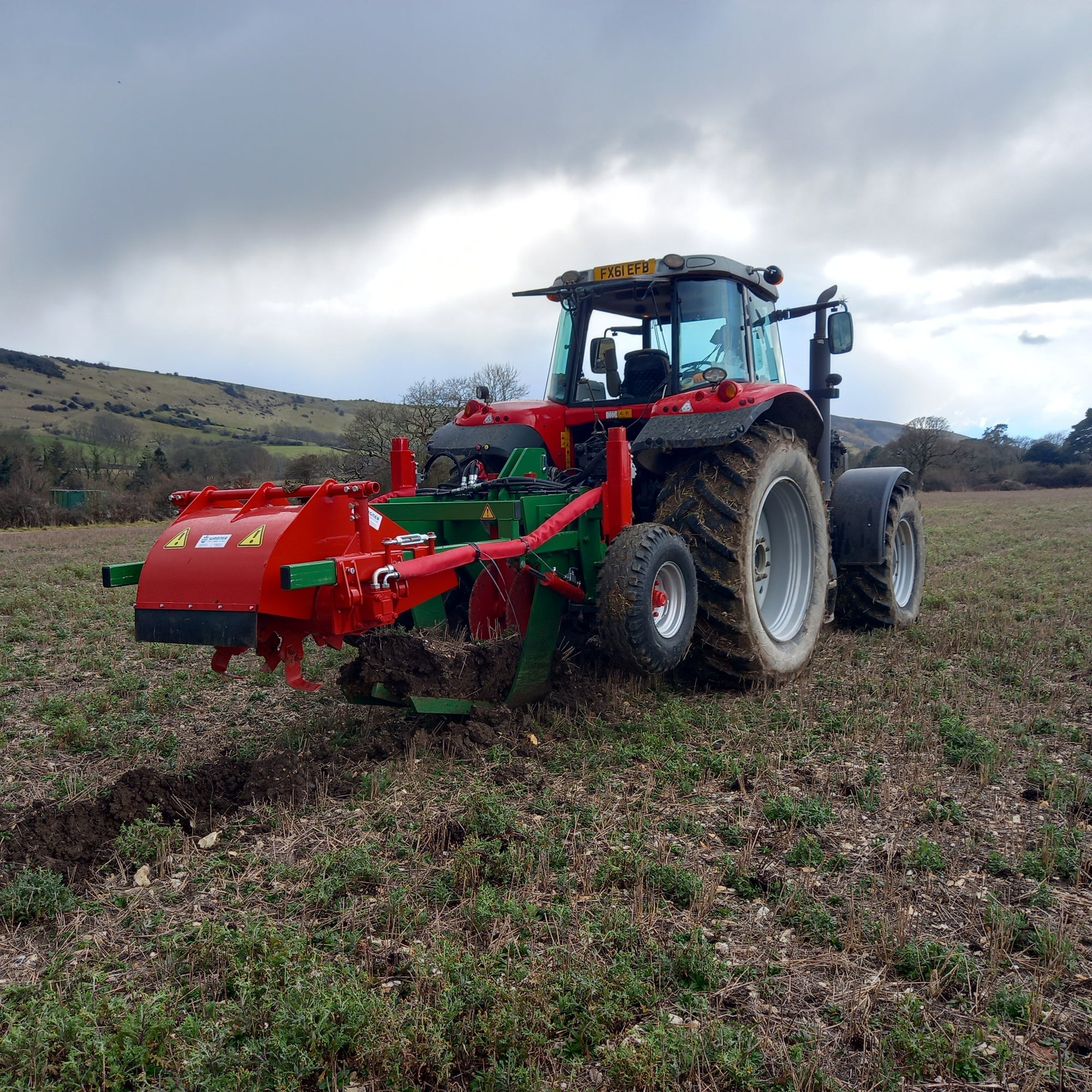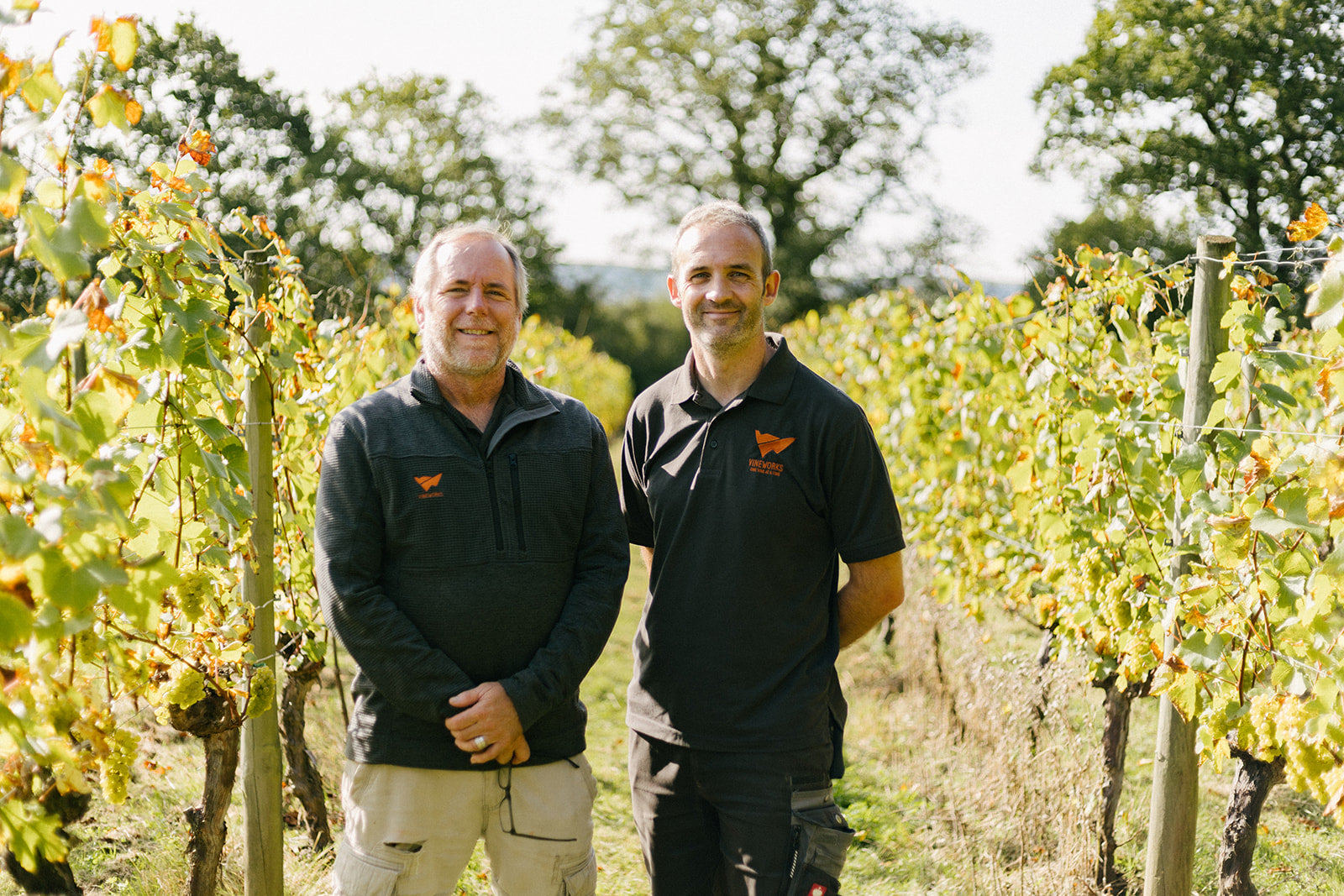

HARVEST PREPARATIONS
Whether you’re harvesting solely by hand, by machine or a combination of the two, there are numerous considerations and preparations to be made in advance of harvest time. Start with the basics of canopy management: ensure all canes are tucked in, wires clipped and the fruit zone foliage stripped on both sides. Only pickable fruit should be hanging on the vine at this stage. Keep the under-vine strip weed-free so that crates of fruit can be tucked underneath the vines to avoid being pressed prematurely by tractors, and mow the alleyways to aid walking.
Discuss the results of your yield estimations with your winemaker to decide on a harvest date and make sure to book picking teams, winery space and transport long in advance. It is of utmost importance to ensure your pickers/ machine harvester, winery and logistics are all lined up for the same days. Each of these vital cogs will of course need regular updates along with your cooperation and flexibility. Coordinating picks at multiple sites a day (each with their own idiosyncrasies) and lining their picks up with available space in only a handful of grape presses while working around the changeable English weather, labour constraints, machinery technicalities, fruit ripeness, disease pressure and insect threats is no walk in the park.
For hand-harvesting, bear in mind that a tiny bunch takes just as long to pick as a large bunch. When deciding how many pickers to source, work on a rate of roughly 50kg of fruit picked per person per hour.
Picking
◆ Picking crates – enough for two day’s picking and laid out under the vines the day before. Consider size, ease of handling, load capacity, maneuverability, stacking ability, ease of cleaning etc
◆ Secateurs – sharp, clean and numbered. One pair per picker plus spares.
◆ Buckets – standard 15-25L plastic buckets with handles. One per picker plus spares.
◆ Disposable gloves – blue, food grade
◆ Boxes of plasters – blue, food grade
Collecting (ground crew)
You will need a team of three ground crew: one tractor driver and two to collect crates of fruit. Roughly one team for every six tons per day, depending on ground conditions, crate sizes, trailer size, row length, distance to loading area etc.
◆ Tractor – fuelled and serviced
◆ Trailer – tailgate dropped where possible
◆ Gloves
Palletising
◆ Pallets – 300-500kg of fruit per pallet. Mark or discard any pallets which cannot be lifted using a pallet truck.
◆ Pallet wrap
◆ Labels/permanent markers
◆ Scales to calculate average weights
◆ Logbook
◆ Pallet truck/forklift
Loading and transport
◆ Forklift or some means of loading a lorry
◆ Lorry plus driver for transport to winery
◆ CAD documents with every load – to be given to the winery/buyer.
The ultimate aim is to transport your fruit as quickly and safely as possible with minimum damage to the grapes and with maximum efficiency. By making considered decisions about equipment, logistics and capabilities, we can all look forward to a Happy 2021 Harvest!



